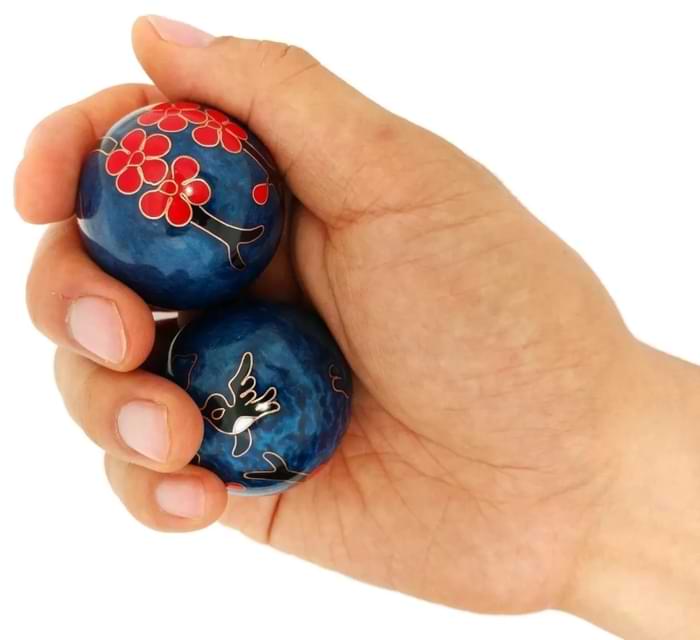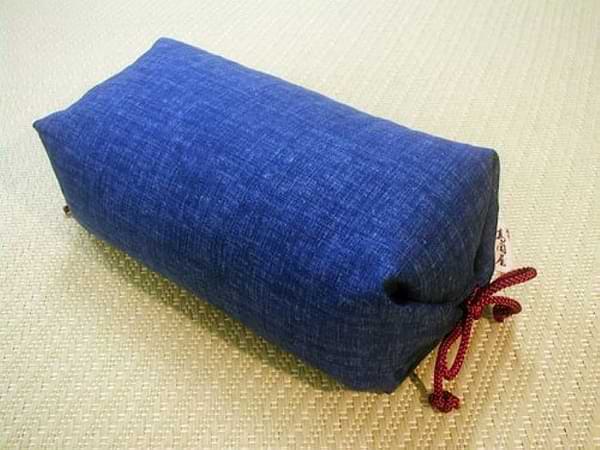
28 August, 2023
Stress Balls: A Global Tradition of Tension Relief
Stress is an inevitable part of human life, and throughout history, people have developed various techniques to alleviate its burden. One such popular method is the use of stress balls, small objects designed to be squeezed and manipulated to reduce tension and promote relaxation. However, many might not realise that stress balls are not just a modern fad; they have deep roots in different cultures around the world. In this blog, we embark on a cultural journey to explore stress balls' fascinating history and significance in various societies.
Ancient Chinese Stress Balls: Baoding Balls

In the heart of ancient China during the Ming dynasty, a remarkable stress-relief tradition was born – the Baoding balls. These small, mesmerising metal spheres, also known as "Chinese health balls," hold a history that intertwines art, medicine, and martial prowess.
They take their name from the city of Baoding in Hebei province, where they were first created and popularised. The exact time of their invention is uncertain, but historical records suggest their presence as early as the Tang dynasty (618-907 AD). However, during the Ming dynasty (1368-1644), they gained widespread recognition and became associated with stress relief and health benefits.
Skilled artisans meticulously crafted them from various materials, including iron, steel, or precious metals like silver and gold. The production process involved casting, forging, and detailed engraving to achieve intricate designs and patterns. These decorative embellishments added beauty to the balls and served as tactile aids during use.
At the heart of Baoding balls' therapeutic significance lies the Traditional Chinese Medicine (TCM) concept. The balls are designed to be held in the hand and rotated continuously with the fingers. This rhythmic movement is believed to stimulate the meridians and acupressure points in the hand, which are believed to be connected to various organs and systems in the body.
In TCM, it is thought that imbalances in the flow of Qi (life force energy) can lead to physical and emotional ailments. By stimulating these acupressure points with Baoding balls, practitioners aimed to restore balance, enhance circulation, and promote overall well-being. This practice is similar to the modern technique of acupressure or reflexology, which uses pressure points on the body for healing purposes.
Beyond their use in TCM, they were embraced for their stress-relieving properties. In ancient China's bustling and often chaotic world, these meditative spheres offered a moment of tranquillity and focus. By channelling attention into the soothing rotation of the balls, individuals found relief from anxiety and tension, achieving a sense of inner calm and clarity.
The act of using them was not limited to isolated moments of stress relief. Many practitioners incorporated them into their daily routines, such as during walks, meditation, or even while engaging in conversation. This continuous engagement fostered a more profound connection with the practice and its potential long-term benefits. Remarkably, they also found their place in the realm of martial arts. Masters and students alike used these spheres to train and enhance their finger dexterity and grip strength. The smooth rotation of the balls demanded finesse and control, which was essential for mastering various martial arts techniques.
As practitioners advanced in their training, they could perform complex tricks and movements with the Baoding balls, showcasing their skill and dedication. In this way, the balls not only provided stress relief but also became a symbol of commitment and expertise within the martial arts community.
Through the passage of time, the tradition of Baoding balls has persevered, with their popularity spreading far beyond China's borders. Today, people worldwide embrace these enchanting spheres as a means of stress relief, meditation, and finger exercise. Baoding balls continue to be crafted with love and care, carrying the essence of ancient Chinese wisdom into the modern era.
Greek Worry Beads: Komboloi

As we journey into the picturesque Mediterranean, we are captivated by the serene tradition of Greek worry beads, known as "komboloi." Like the gentle waves of the sea, these strings of beads hold the promise of relaxation and contemplation, providing a soothing escape from life's worries.
The origins of komboloi can be traced back to the 17th century, during the Ottoman occupation of Greece. The Turkish equivalent of worry beads, called "kompoloi," inspired the Greeks, and over time, they adapted the practice to suit their cultural preferences. Initially, komboloi were used primarily for counting prayers in religious ceremonies, similar to prayer beads in other cultures.
The beads are crafted from a variety of materials, each with its unique charm. Traditionally, amber and coral beads were popular choices due to their warm colours and natural beauty. However, as the tradition evolved, other materials like semi-precious stones, wood, or even plastic became prevalent, offering a broader range of options to suit individual preferences and budgets.
Their enchanting appeal lies in their simplicity and the repetitive act of running the beads through one's fingers. This rhythmic movement creates a soothing sound akin to soft whispers, which has an almost hypnotic effect on the mind. As the beads glide through their hands, practitioners often find themselves immersed in a state of tranquillity, creating a brief respite from the hustle and bustle of everyday life.
In Greece and its neighbouring countries, it is common to witness people leisurely twirling their komboloi while sitting in cafes, waiting for appointments, or enjoying leisure moments. This seemingly effortless act of using them offers a way to cope with stress and anxiety, fostering a sense of calm and inner peace. They have become more than just stress-relieving tools; they have evolved into a symbol of Greek culture and hospitality. It is customary for hosts to offer their guests a set of them as a gesture of welcome and friendship. The act of sharing these beads strengthens connections and fosters a sense of camaraderie, making them an integral part of social gatherings and interactions.
Beyond the boundaries of Greece, komboloi have found their way into various communities and cultures. Travellers who have visited Greece often bring them back as souvenirs, cherishing the tangible memento and its peaceful memories. In this way, their tradition spreads its calming influence far beyond the shores of the Mediterranean.
In today's fast-paced and technology-driven world, the allure of komboloi endures as a timeless symbol of simplicity and serenity. Many individuals find solace in these beads, using them as a mindful tool to navigate stressful situations, reduce anxiety, and improve focus. Moreover, they also serve as a gentle reminder of the importance of slowing down, taking a breath, and appreciating the present moment.
Japanese Relaxation Tools: Tawara and Amemori

In the Land of the Rising Sun, where ancient traditions intertwine with modern innovations, we encounter two exquisite stress-relieving objects: the "tawara" and the "amemori."
The tawara, a small cushion-like object, holds a profound purpose beyond its unassuming appearance. Traditionally filled with rice or beans, this versatile tool serves as an instrument for hand exercise, promoting both physical and mental well-being. As one grasps and kneads the tawara, the gentle pressure applied to the hands helps to relieve muscle tension, increase blood circulation, and improve overall hand flexibility.
The significance of the tawara extends beyond its immediate stress-relieving properties. In a culture that values mindfulness and contemplation, the act of using the tawara becomes a meditative practice. People often engage in this activity during moments of reflection, allowing them to find solace amidst the hustle and bustle of daily life. The rhythmic motion of the tawara symbolises the cyclic nature of existence and reinforces the notion of finding harmony in every aspect of life.
In the realm of sensory indulgence, the amemori reigns supreme. This small cloth, infused with sweet-smelling herbs or flowers, emanates soothing scents that provide both aromatherapy benefits and stress-reducing qualities. The aromatic experience transcends the physical realm and touches the soul, invoking a sense of calm and serenity.
In Japanese culture, the power of scent is highly revered, and the use of amemori goes beyond stress relief. The aroma of these sweet-smelling herbs is believed to have therapeutic effects, promoting relaxation, improving mood, and even encouraging restful sleep. It serves as a reminder of the connection between nature and well-being, embracing the idea that the natural world can provide a profound source of comfort and rejuvenation. The Japanese devotion to finding harmony and tranquillity is deeply ingrained in their way of life, and the tawara and amemori exemplify this philosophy. In the midst of bustling cities and cutting-edge technology, these traditional relaxation tools remind people to pause, breathe, and embrace simplicity.
These practices are not confined to specific rituals or ceremonial events but are seamlessly integrated into daily routines. Whether it's a brief moment of kneading the tawara during a break or inhaling the calming aroma of the amemori before a significant task, these practices serve as gentle anchors amidst life's constant ebb and flow.
In a rapidly changing world, the tradition of using tawara and amemori is a testament to Japanese culture's enduring wisdom. While contemporary stress-relieving methods abound, these age-old tools continue to hold their unique charm, reminding us of the importance of connecting with oneself and finding solace in simplicity. As people across the globe seek ways to manage stress and achieve balance, the tawara and amemori remain relevant ambassadors of Japanese cultural heritage. By incorporating these timeless practices into our lives, we can take a step closer to finding harmony within ourselves and our surroundings, just as the Japanese have done for generations.
Native American Dreamcatchers

As we journey across the vast expanse of the Atlantic to North America, we are captivated by the ancient Native American tradition of dreamcatchers. These intricate, handmade hoops adorned with feathers and beads hold more than just artistic charm; they carry a deep spiritual significance that extends beyond the realm of dreams.
The origins of dreamcatchers can be traced back to various Native American tribes, with the Ojibwe (Chippewa) tribe often credited with their creation. The story goes that a spiritual elder and teacher named Asibikaashi (Spider Woman) would weave her protective web above the sleeping area of her people. This intricate web would catch any negative energies, bad dreams, and anxieties that tried to penetrate the sacred space.
The Ojibwe believed that good dreams could pass through the centre of the dreamcatcher and gently descend upon the sleeping individual. In contrast, the bad dreams and negative thoughts would be trapped in the web and eventually dissolve with the morning light. This symbolic representation of protection and purification became deeply ingrained in Native American culture and was passed down through generations.
To this day, dreamcatchers remain an integral part of Native American culture and are widely used as a means of promoting peaceful sleep and reducing stress. Families and individuals hang them above their beds or in their homes to create a protective and calming environment, allowing for a restful and rejuvenating slumber.
In addition to their use as sleep aids, they also find their place in various ceremonies and rituals within Native American communities. The spiritual significance of them extends beyond stress relief, as they are often regarded as symbols of unity, interconnectedness, and a deeper understanding of the world and oneself.
Dreamcatchers' enduring appeal lies in their aesthetic allure and the profound connection they evoke with Native American heritage and spirituality. As these beautiful hoops are woven with care and intention, they carry the stories, traditions, and wisdom of Native American ancestors.
In modern times, they have transcended their cultural origins and have been embraced by people from diverse backgrounds who seek comfort, protection, and harmony in their lives. This widespread popularity is a testament to the universal human desire to find solace and inner peace amidst the challenges of daily life.
Conclusion
Stress balls have a universal appeal that transcends borders and cultures. As we explored the diverse stress-relieving objects and rituals from around the world, it becomes evident that the need to cope with stress is a shared human experience. Whether it's the Chinese Baoding balls, Greek worry beads, Japanese tawara and amemori, or Native American dreamcatchers, each culture has devised unique ways to combat tension and promote relaxation.
As we continue to navigate the challenges of modern life, we can draw inspiration from these global traditions of tension relief. Incorporating stress balls into our daily routines might not only provide physical comfort but also serve as a reminder of the rich cultural heritage and wisdom that has been passed down through generations. So, the next time you reach for your stress ball, take a moment to appreciate its global significance and the powerful impact it can have on our well-being.
The Stress Balls Only Team




